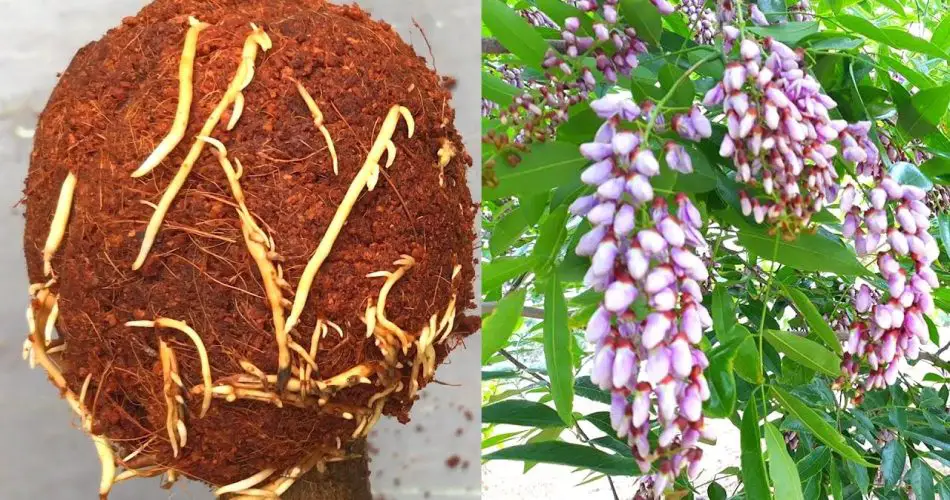Coconut fiber, also known as coir, is a versatile and eco-friendly material that is widely used in gardening, horticulture, and even in the creation of mats, ropes, and other products. Extracting coconut fiber efficiently can be a valuable skill, especially if you’re involved in gardening or plant propagation. In this guide, we’ll show you how to extract the roots quickly and make the most of your coconut fiber harvest.
What is Coconut Fiber and Why Should You Harvest It?

Coconut fiber is extracted from the husk of a coconut and is commonly used as a natural alternative to peat moss in gardening. It is durable, breathable, and holds moisture well, making it ideal for plant propagation and potting mixes. Besides gardening, coconut fiber is used in a variety of sustainable products, including mats, brushes, and ropes.
For those looking to grow plants in coco coir or use it as a natural mulch, extracting the right amount of fiber is essential for creating high-quality growing media. But how can you efficiently extract the roots and fiber from a coconut husk?
Step-by-Step Guide to Extract Coconut Fiber and Roots
Step 1: Prepare the Coconut Husk
To begin extracting coconut fiber, you’ll first need to remove the husk from the coconut. If you’re using mature coconuts, the husk will be thick and fibrous. Fresh coconuts are softer and easier to handle. To remove the husk:
- Use a machete or knife to cut away the outer shell of the coconut.
- If you’re working with dried coconuts, you may need to break the shell into pieces to access the inner fibers.
Step 2: Soak the Coconut Husk
Soaking the husk helps loosen the fiber and makes it easier to extract. The soaking process also softens the material, making it more pliable for extraction. Follow these steps:
- Submerge the husk in water for several hours or overnight. The longer the soak, the easier it will be to extract the fibers.
- Once soaked, you will notice that the fiber starts to become more separated from the woody parts of the husk.
Step 3: Extract the Roots and Fibers
Once the husk is softened, you can begin extracting the coconut fiber and roots. The roots are typically located at the base of the coconut husk, where the fibers are densely packed.
- Use a fork or hand rake to gently pull apart the fibers. If you’re working with dried coconut husk, you may need to use a bit more force.
- As you separate the roots from the fiber, be careful not to damage the fibers, as they are valuable for making potting mixes or as growing media for plants.
- The fibers should come apart easily once they are loosened, and you can collect them for use in gardening or other purposes.
Step 4: Dry the Fiber
After extracting the roots and fibers, it’s time to dry them for storage or immediate use. Here’s how to dry coconut fiber properly:
- Spread the fiber out in a sunny location for several hours or days, depending on the weather. Ensure it is completely dry before storing.
- If you don’t have access to sunlight, you can also dry the fiber in an oven on low heat for faster results.
- Store the dried fiber in a cool, dry place to prevent mold or decay.
How to Use Extracted Coconut Fiber in Gardening
Once you’ve extracted your coconut fiber, you can use it in a variety of ways to benefit your garden or indoor plants:
- Planting Medium: Coconut fiber is a popular soil amendment for improving drainage and aeration. You can mix it with compost or other organic materials to create a rich growing medium for your plants.
- Seed Starting: Coconut fiber is excellent for starting seeds, as it retains moisture well and provides a lightweight, well-draining medium.
- Mulch: Spread coconut fiber around the base of plants as a mulching material to help retain moisture, suppress weeds, and regulate soil temperature.
Benefits of Using Coconut Fiber
There are numerous benefits to using coconut fiber in your gardening and home projects:
- Sustainable: Coconut fiber is a renewable resource, making it an eco-friendly option for gardeners and homeowners alike.
- Improved Plant Growth: It helps promote root development, moisture retention, and good air circulation around the plant roots.
- Versatile: Coconut fiber can be used for everything from making natural mats and ropes to creating nutrient-rich compost for plants.
Conclusion: Efficiently Extract Coconut Fiber for Better Gardening
Whether you’re using it for plant propagation, making eco-friendly products, or improving your garden’s soil, coconut fiber is a highly beneficial material to have on hand. By following the steps outlined above, you can quickly extract roots and maximize your coconut fiber harvest, ensuring your gardening projects thrive while promoting sustainability.
Happy gardening, and enjoy the benefits of your fresh coconut fiber! 🌱🍃



